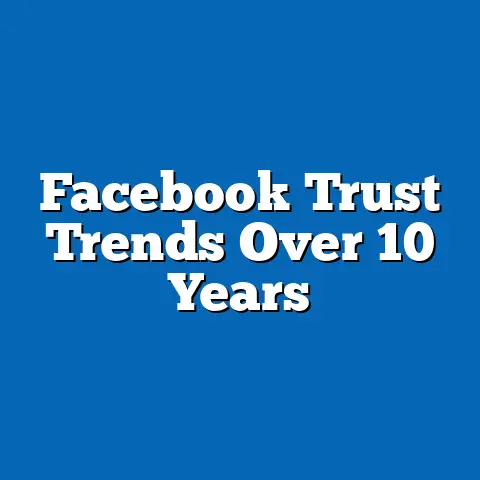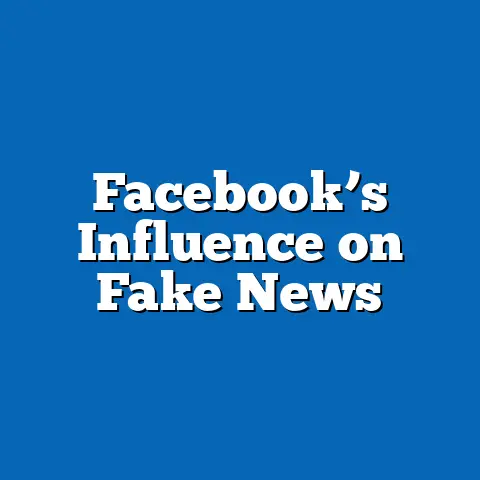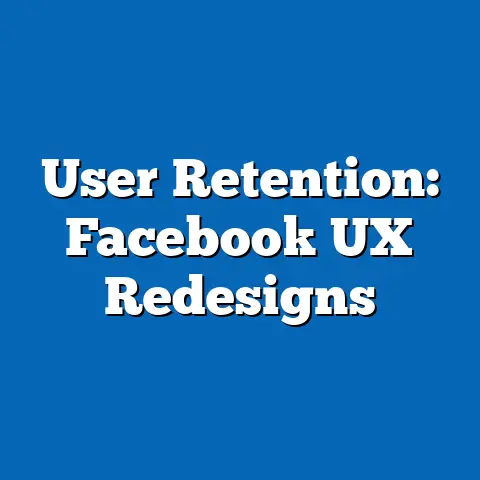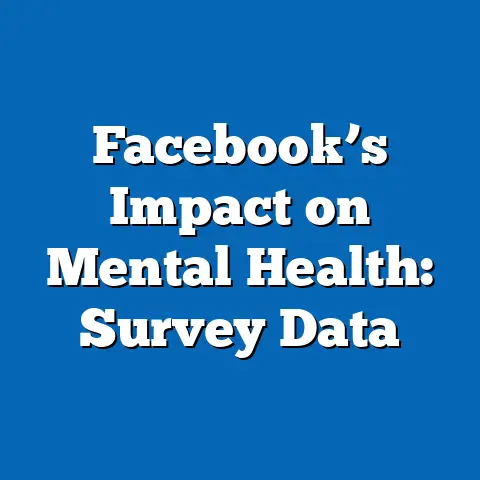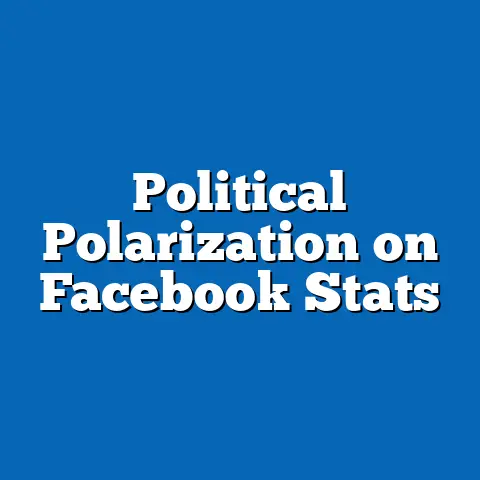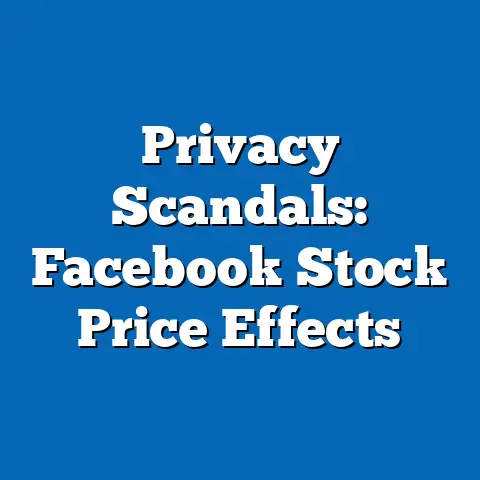Facebook’s Role in Social Movements
In an era where digital platforms shape public discourse, social movements have increasingly turned to social media to amplify their messages, mobilize supporters, and challenge systemic issues. However, a critical problem emerges: while platforms like Facebook provide unprecedented reach and connectivity, they also pose risks of misinformation, polarization, and corporate control over narratives. As of 2023, Facebook remains the world’s largest social media platform, with approximately 3 billion monthly active users, representing nearly 37% of the global population (Statista, 2023).
This vast user base spans diverse demographics, with significant representation across age groups—24% of users are aged 18-24, while 29% are aged 25-34, according to DataReportal (2023). Regionally, Asia-Pacific accounts for 47% of users, while North America and Europe contribute 10% and 13%, respectively. These statistics underscore Facebook’s unparalleled potential to influence social movements, but they also highlight the platform’s role in amplifying both unity and division, a dynamic that demands closer examination.
Section 1: The Rise of Digital Activism on Facebook
1.1 A Platform for Mobilization
Facebook’s emergence as a tool for social movements began in the late 2000s, coinciding with the platform’s rapid global expansion. By 2011, during the Arab Spring, Facebook had become a critical space for activists in countries like Egypt and Tunisia to organize protests and share real-time updates. A study by the Pew Research Center (2011) found that 48% of Egyptians who used social media during the uprising cited Facebook as their primary tool for connecting with other activists.
The platform’s features—such as groups, events, and live streaming—allow users to coordinate large-scale actions with minimal resources. For instance, during the 2011 Egyptian revolution, the “We Are All Khaled Said” Facebook page, created to protest police brutality, amassed over 400,000 followers within months, becoming a central hub for mobilizing anti-government protests (Howard & Hussain, 2013).
Today, Facebook continues to serve as a digital megaphone for movements worldwide. In 2020, the Black Lives Matter (BLM) movement saw a surge in online engagement, with over 10 million posts, shares, and comments related to BLM on Facebook in the United States alone between May and June, according to internal data cited by The Washington Post (2020). This illustrates the platform’s capacity to drive awareness and action on a massive scale.
1.2 Historical Trends: From Arab Spring to #MeToo
Comparing historical and current data reveals a consistent trend: Facebook’s role in social movements has grown alongside its user base. In 2011, during the Arab Spring, Facebook had approximately 845 million monthly active users globally (Statista, 2012). By 2018, during the peak of the #MeToo movement, this number had risen to 2.27 billion, amplifying the reach of feminist advocacy against sexual harassment (Statista, 2018).
Historically, younger users have been at the forefront of digital activism on Facebook. Data from Pew Research (2018) shows that 68% of 18-29-year-olds in the U.S. used social media to engage with political or social issues, compared to just 36% of those aged 50 and older. This demographic divide persists, highlighting how younger generations leverage platforms like Facebook to drive change.
Section 2: Mechanisms of Influence on Facebook
2.1 Algorithms and Echo Chambers
Facebook’s algorithm plays a pivotal role in shaping the visibility of social movement content. The platform prioritizes content based on user engagement, meaning posts with high likes, shares, and comments are more likely to appear in news feeds. A 2021 study by the Center for Countering Digital Hate found that posts with emotionally charged or polarizing content received up to 5 times more engagement than neutral posts, often amplifying divisive narratives within movements.
This algorithmic bias can create echo chambers, where users are primarily exposed to content aligning with their existing beliefs. According to a 2016 study published in the journal Science, 63% of Facebook users reported seeing content that reinforced their political or social views, limiting exposure to diverse perspectives (Bakshy et al., 2015). For social movements, this can both strengthen in-group solidarity and hinder broader dialogue.
2.2 Viral Spread and Grassroots Power
On the positive side, Facebook’s viral mechanics enable grassroots movements to gain traction rapidly. The platform’s “share” feature allows information to spread exponentially, often bypassing traditional media gatekeepers. During the 2019 Hong Kong protests, for example, over 1.5 million users engaged with protest-related content on Facebook, with many posts reaching millions of views through shares and reposts, according to data from CrowdTangle (2019).
This viral spread is particularly impactful for marginalized communities lacking access to mainstream media. A 2022 report by the Knight Foundation noted that 54% of activists from underrepresented groups in the U.S. relied on Facebook to share their stories, compared to 38% who used traditional media outlets. This democratizes advocacy but also raises concerns about unchecked narratives.
2.3 Data Visualization: Engagement Trends
If visualized, a line graph tracking Facebook engagement with social movement hashtags over the past decade would likely show sharp spikes during key events like the Arab Spring (2011), #BlackLivesMatter (2014-2020), and #MeToo (2017-2018). Overlaying user growth data would reveal a correlation between expanding user bases and increased movement visibility. Such a chart, sourced from Statista and CrowdTangle analytics, would highlight how Facebook’s scale amplifies activism but also intensifies challenges like misinformation during peak engagement periods.
Section 3: Demographic Patterns in Activism on Facebook
3.1 Age and Generational Differences
Demographic data reveals distinct patterns in how different age groups engage with social movements on Facebook. Younger users (18-34) are more likely to participate in online activism, with 72% reporting they have shared or posted about social issues, per a 2023 Pew Research survey. In contrast, only 41% of users aged 50 and older engage similarly, often citing a preference for offline action or skepticism about digital platforms.
This generational gap reflects broader trends in technology adoption and trust. Younger users, often digital natives, view platforms like Facebook as natural spaces for advocacy, while older users may perceive them as less reliable due to privacy scandals or misinformation concerns.
3.2 Regional and Socioeconomic Disparities
Regionally, Facebook’s impact on social movements varies based on internet penetration and political context. In sub-Saharan Africa, where internet access grew by 23% between 2019 and 2023 (International Telecommunication Union, 2023), Facebook has become a key tool for movements addressing issues like gender-based violence and electoral reform. However, only 19% of the population in low-income countries uses the platform, limiting its reach compared to wealthier regions like North America, where 69% of adults are active users (DataReportal, 2023).
Socioeconomic status also influences engagement. A 2021 study by the University of Southern California found that users from higher-income brackets in the U.S. were 30% more likely to donate to causes via Facebook fundraisers than those from lower-income groups, reflecting disparities in disposable income and digital literacy.
3.3 Gender Dynamics
Gender plays a role in how social movements are shaped on Facebook. Women are more likely to engage with movements related to gender equality and social justice, with 64% of female users in the U.S. reporting participation in such causes, compared to 52% of male users (Pew Research, 2022). Movements like #MeToo and #TimesUp have seen disproportionate engagement from women, underscoring Facebook’s role as a platform for feminist discourse.
Section 4: Challenges and Risks of Facebook in Social Movements
4.1 Misinformation and Disinformation
One of the most significant challenges is the spread of misinformation during social movements. A 2020 report by the MIT Media Lab found that false or misleading posts related to BLM protests were shared 3.8 times more frequently than verified content on Facebook. This can distort public perception and undermine legitimate activism.
During the 2016 U.S. election, foreign actors used Facebook to spread divisive content, with over 126 million users exposed to Russian-backed disinformation, according to Facebook’s own estimates (Senate Intelligence Committee Report, 2019). Such interference highlights the platform’s vulnerability in politically charged movements.
4.2 Corporate Control and Censorship
Facebook’s content moderation policies have also drawn criticism for stifling activism. In 2021, the platform temporarily suspended accounts and removed posts related to Palestinian advocacy during the Israel-Gaza conflict, citing violations of community standards. A subsequent report by Human Rights Watch (2021) documented over 1,000 instances of content removal or account suspensions, raising concerns about bias in enforcement.
Activists argue that Facebook’s reliance on automated moderation tools, which flagged 90% of removed content in 2022 (Meta Transparency Report, 2022), often fails to account for cultural or political nuance. This corporate control can silence marginalized voices, countering the platform’s democratizing potential.
4.3 Polarization and Conflict
Facebook’s role in polarizing users also affects social movements. A 2019 study by the University of Warwick found that prolonged exposure to ideologically aligned content on Facebook increased hostility toward opposing groups by 15% among surveyed users. For movements seeking consensus or reform, this polarization can deepen societal divides rather than bridge them.
Section 5: Case Studies of Facebook’s Impact
5.1 Black Lives Matter (2020)
The 2020 resurgence of Black Lives Matter following George Floyd’s murder exemplifies Facebook’s power in modern activism. Over 28 million users in the U.S. engaged with BLM content on the platform between May 25 and June 7, 2020, with posts peaking at 1.1 million per day (CrowdTangle, 2020). Facebook fundraisers for racial justice causes raised over $50 million during this period, per Meta’s internal data.
However, the movement also faced challenges, including the spread of conspiracy theories and false narratives about protests. Approximately 12% of BLM-related posts contained misinformation, according to a study by First Draft (2020), illustrating the dual nature of Facebook’s influence.
5.2 Climate Strikes (2019)
The 2019 Global Climate Strike, inspired by Greta Thunberg, leveraged Facebook to coordinate events across 150 countries. Over 7.6 million users engaged with strike-related content, and more than 4,000 events were organized via the platform (350.org, 2019). This demonstrated Facebook’s ability to facilitate global coordination.
Yet, climate misinformation also proliferated, with a 2021 Avaaz report finding that false climate change content on Facebook garnered 1.36 million views in a single month. This underscores the platform’s struggle to balance free expression with factual integrity.
Section 6: Facebook’s Response and Policy Evolution
6.1 Content Moderation Efforts
In response to criticism, Facebook has invested in content moderation, employing over 40,000 staff and contractors by 2023 to review content (Meta Transparency Report, 2023). The platform also introduced fact-checking partnerships, labeling over 200 million pieces of content as false or misleading in 2022 alone.
Despite these efforts, gaps remain. Only 3% of hate speech content is proactively removed before user reports, per Meta’s data, indicating a reactive rather than preventive approach.
6.2 Support for Activism
Facebook has also launched tools to support activism, such as the “Fundraisers” feature, which has raised over $5 billion for causes since 2015 (Meta, 2023). Additionally, the platform’s “Community Help” feature has aided disaster response and local movements by connecting users with resources.
However, activists remain wary of Meta’s profit-driven model, which prioritizes engagement over neutrality. A 2022 whistleblower report by Frances Haugen revealed internal documents showing that Meta knew its algorithms amplified divisive content but took limited action to mitigate harm.
Section 7: Broader Implications and Future Trends
Facebook’s role in social movements is a microcosm of broader tensions in the digital age: connectivity versus control, empowerment versus exploitation. The platform has undeniably transformed activism, enabling movements to reach billions and fostering global solidarity. Yet, its challenges—misinformation, polarization, and censorship—threaten to undermine these gains.
Looking ahead, the trajectory of Facebook’s influence will likely depend on regulatory pressures and user behavior. With 59% of U.S. adults supporting stricter social media regulations (Pew Research, 2023), governments may push for greater accountability. Meanwhile, younger users are migrating to platforms like TikTok, with 67% of 18-29-year-olds using it compared to 62% on Facebook (DataReportal, 2023), suggesting a potential decline in Facebook’s dominance.
For social movements, this evolving landscape means adapting to new tools while grappling with persistent challenges. Facebook’s legacy in activism will be defined by whether it can balance its commercial interests with the public good—a question that remains unanswered as digital activism continues to reshape society.

